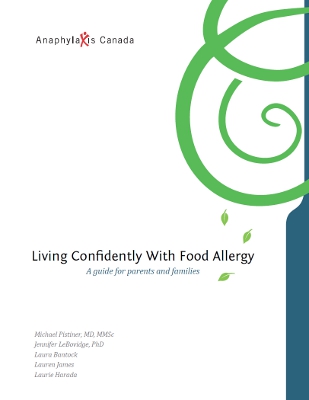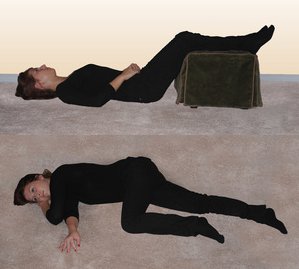If you think your child is experiencing an anaphylactic reaction, follow the steps of the emergency plan. Talk to your doctor about when and how to use your child’s auto-injector.
Remember that epinephrine is the first line treatment for anaphylaxis. This is the medicine of choice for a severe allergic reaction. It works quickly and helps to treat life-threatening symptoms by opening up the airways and increasing blood pressure. Deaths from allergic reactions to foods are rare, but the risks are real and need to be taken seriously. In most cases, deaths from allergic reactions to foods have been caused by a delay in treatment with epinephrine.2 16
Contact emergency services. Call 9-1-1 (or the emergency service in your area) and stay with your child while waiting for the ambulance. Get another person to show paramedics where your child is. Do not make your child stand up or walk to the ambulance.
Place your child on their back with their legs raised while waiting for the ambulance. This position will help the blood flow to the vital organs of the body (heart, brain and lungs) and help to reduce the symptoms of shock.17 18
If your child is vomiting (throwing up) or feels nauseated, place them on their side (recovery or semi-prone position) so that if they vomit, they will not choke. It is very important to keep their airway clear.
If your child is finding it difficult to breathe, they may prefer to be in a more upright position. Do not raise them into an upright position until they have been seen by a doctor because raising them this can cause a sudden drop in blood pressure, which can be dangerous.18
If symptoms come back or get worse while waiting for the ambulance, a second dose of epinephrine can be given as early as 5-15 minutes after the first dose.2 3 Keep in mind that epinephrine can wear off, and your child may need more epinephrine, as well as other treatments. It is important that your child is taken to the emergency department to be seen by a doctor.
A second wave of anaphylaxis is called a biphasic reaction.19 This happens after the initial symptoms are resolved and is usually several hours after the first reaction.
The paramedics should take the child to the ambulance by stretcher.
Stay calm. Your child will feel less anxious if they see that you are in control.
Ask the doctor to prescribe auto-injectors before leaving the hospital. Purchase the auto-injectors as soon as possible.
Deaths from anaphylaxis are rare and most can be avoided. Epinephrine works the best when given early. It can be dangerous to wait to give epinephrine.
References2. National Institute of Allergy and Infectious Disease (NIAID)-Sponsored Expert Panel. “
Guidelines for the Diagnosis and Management of Food Allergy in the United States: Report of the NIAID-Sponsored Expert Panel.”
The Journal of Allergy and Clinical Immunology 126.6 (2010): S1-S58.
3. Sampson, H.A. et. al. “
Second symposium on the definition and management of anaphylaxis: Summary report—Second National Institute of Allergy and Infectious Disease/Food Allergy and Anaphylaxis Network symposium.”
The Journal of Allergy and Clinical Immunology 117.2 (2006): 391-397.
17. Pumphrey, R.S.H. “Fatal posture in anaphylactic shock.”
The Journal of Allergy and Clinical Immunology 112.2 (2003): 451-452.
18. Simon, E. et al. “
World Allergy Organization guidelines for the assessment and management of anaphylaxis.”
World Health Organization – World Allergy Organization Journal (2011)
21-22.
19. Ellis, A.K. and Day, J.H. “
Incidence and characteristics of biphasic anaphylaxis: a prospective evaluation of 103 patients.”
Annals of Allergy, Asthma & Immunology 98.1 (2007): 64-69.

